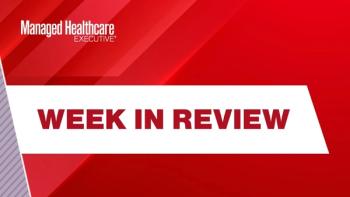
Opinion: Cost transparency improves collections and boosts satisfaction
Consider providing cost estimates prior to rendering care to increase collections, patient satisfaction.
One complaint about Obamacare is that deductibles have skyrocketed since its inception. The average deductible has about doubled in the past decade in the employer market, a phenomenon that began long before Obamacare. In 2016, the
Patients are often shocked when they get hit with
Indeed, medical providers increasingly complain about unpaid medical bills. The credit bureau
Hospitals historically have not really had to worry about collecting medical bills directly from patients. Whereas Americans pay about 42% of dental bills out of pocket and 10% of physician bills out of pocket, they owe a much smaller share of their hospital bills. On average, cost-sharing is only about 3% of the cost when patients enter the hospital.
Only a few years ago, nearly 90% of patients made at least partial payments toward their share of hospital bills. In 2016 this had dropped to around three-quarters. As hospitals’ outstanding debts mount, many hospitals began setting up programs to get patients to pay more of their bills in advance.
According to TransUnion, about 92% of patients have the ability and are willing to pay hospital bills of less than $500 and just more than half (54%) are able and willing to pay bills that exceed $500. So why are people not paying their medical bills? Maybe a hint can be found in the TransUnion report: “In just about any retail environment in the U.S., people know how much they’ll pay for something before they buy it. Except when it comes to their health. Patients are often not provided with pre-service estimates because of the complexity involved in estimating healthcare costs.”
Americans may be more apt to pay their outstanding hospital bills if they were given an estimate of what their bills are going to be in advance of receiving care. Nine-in-10 patients believe it is important to know ahead of time their share of the cost. Giving patients an idea of charges ahead of time is an opportunity to get deposits and collect more of their outstanding fees.
It’s not just unexpected bills that annoy consumers. It’s also the sense that bills are unfair. A patient who leaves the hospital and receives a bill in the mail charging $15 for each ibuprofen tablet and $300 for an admissions kit may feel taken advantage of. Discounting the charges to only $5 and $100 respectively probably does not make them any more excited to pay their remaining balance.
Something that all healthcare providers should take to heart is that providing cost estimates prior to rendering care not only increases collections, it also increases patient satisfaction-creating a more rewarding healthcare experience for all.
Herrick
Devon M. Herrick, PhD is a health economist and senior fellow with the National Center for Policy Analysis.
Newsletter
Get the latest industry news, event updates, and more from Managed healthcare Executive.

















































